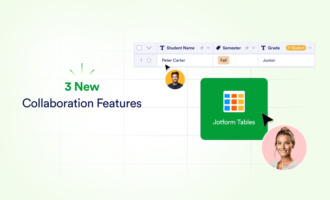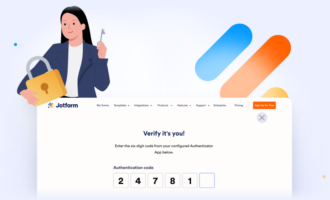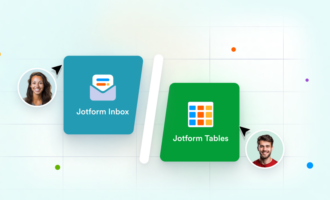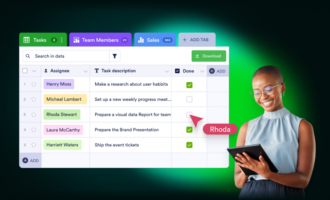Ever faced a big-picture problem at your company but couldn’t figure out how to fix it or where to even start?
Turning workplace operations around can be a rewarding experience, but it also can be difficult when you don’t know exactly what needs to be fixed.
That’s why consultants, directors, administrators, and other decision makers use assessment forms to cut through the noise, identify potential issues, and get to the heart of a problem.
As its name suggests, an assessment identifies potential deficiencies and measures key performance indicators, known as KPIs, which gauge how well business goals, plans, and objectives are achieved.
More specifically, needs assessment forms provide a snapshot of how individual divisions, departments, teams, or affiliated organizations operate and what constraints there may be at a given point in time.
School administrators, for instance, use “needs assessment forms” to determine how demands for specific services, such as after-school programs or nonprofit partnerships, have changed over time for parents, educators, and students. The survey results, in turn, can inform future decisions and determine whether there are any service gaps that must be addressed.
Government agencies, meanwhile, use “needs assessment forms” to determine how taxpayers’ money should be spent and what services should be prioritized, such as public health, sanitation, or road maintenance.
Specific details and questions in needs assessment forms will vary widely based on a number of factors, such as the industry and subjects targeted for analysis. Some surveys may require big-picture questions, while others may focus on more granular-level topics.
There are, however, some common elements that “needs assessment forms” should include in order to identify areas for improvement:
- Contact information for people filling out a form, such as names, addresses, phone numbers, employee identification numbers, and email addresses. TIP: Some of this information can be omitted if form responders want to be anonymous. In some cases, people may feel like they can be more forthright if their responses are confidential.
- Information that identifies the specific services, departments, programs, or individuals being analyzed, such as supervisor names, reference numbers, company location, company addresses, and department names.
- Detailed questions about programs, processes, or services, as well as how they are carried out, delivered, and evaluated. The scope and focus of these questions will depend heavily on what is being analyzed and the amount of data needed to drive future decisions. TIP: Integrating multiple-choice questions or rating tables into the assessment form will allow people to provide responses that reflect their specific opinions. These questions, in turn, provide a data set that is more accurate and reliable.
- Space for people to provide specific comments or explain certain responses. Everyone’s situation is unique, and the things that influence their opinions may be unique as well. This also can be a way to gather valuable feedback or suggestions for specific services.
How Jotform can generate assessment data to power decisions
Educators may be more well known for their work in the classroom, but there is a lot of work that happens behind the scenes to make it all happen.
There are, after all, inherent costs attached to paying salaries, upgrading facilities, buying classroom supplies, and organizing student activities. And competing with other schools for federal funds to offset those costs can be a difficult task that requires a little extra help.
It’s an area that one particular education consulting firm knows well, particularly when it comes to federal funds that support disadvantaged children and students who have limited English language skills.
The Education company offers professional development opportunities for school leaders and hires and manages educators to help disadvantaged students meet or exceed state academic achievement standards.
The company uses Jotform to keep track of key accounting tasks, such as invoices, expense reimbursements, meeting requests, needs assessments, and product orders for clients.
In most cases, forms are filled out by employees and sent to internal departments for approval. Expense reimbursements, for instance, are sent to the company’s accounting department, which produces invoice requests for clients.
Although everyone who filled out a form received a PDF copy in an email, company managers found that there was no way to make changes to the PDF and customize it for specific recipients.
Jotform’s newest product, Jotform PDF Editor, allows users to not only create PDF documents with information collected from online forms but also to edit those documents.
PDF Editor’s drag-and-drop feature provides a seamless way for users to place form information and elements, such as images or page breaks, in PDF documents.
Users can even change layout elements, such as background color, background image, page orientation, font color, font type, and line spacing, to give their PDF documents a professional, polished touch. Even form response information, such as headlines and text, can be altered in PDF Editor without modifying the original copy that’s stored in a user’s Jotform account.
PDF Editor’s layout grid format, meanwhile, allows users to resize form elements or fields and move them around in a document.
Users can also create a template of their customized PDF document so they can use it again.
“Duplicating that PDF across forms is going to be unbelievably huge for us,” a sales executive with the Education Service company said in an interview with JotForm.
“I can change the content, but formatting it — having the same checkboxes, the same coloring, and all of that — takes a ton of time, so being able to duplicate it would save hours of work,” she said.
How have you integrated Jotform into your workflow? We’d love to hear from you in the comments below!








































































Send Comment: